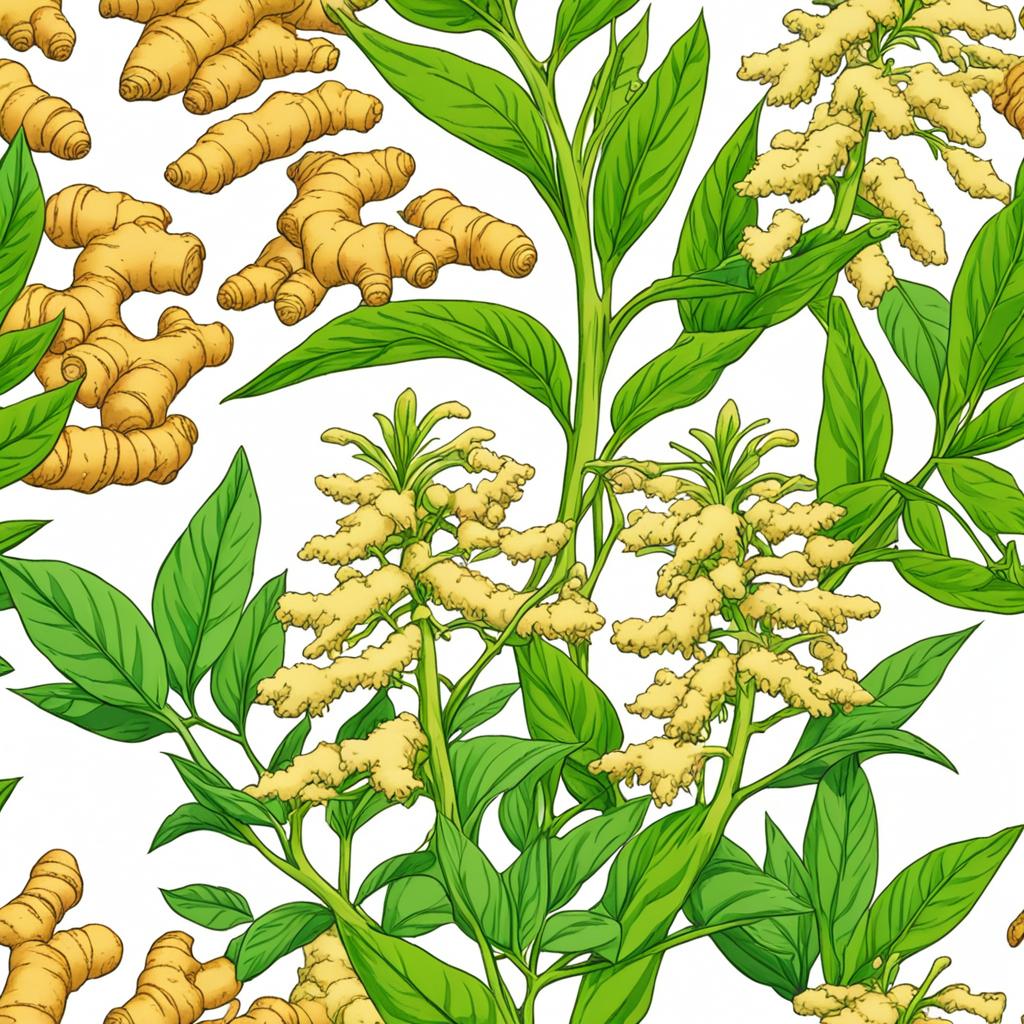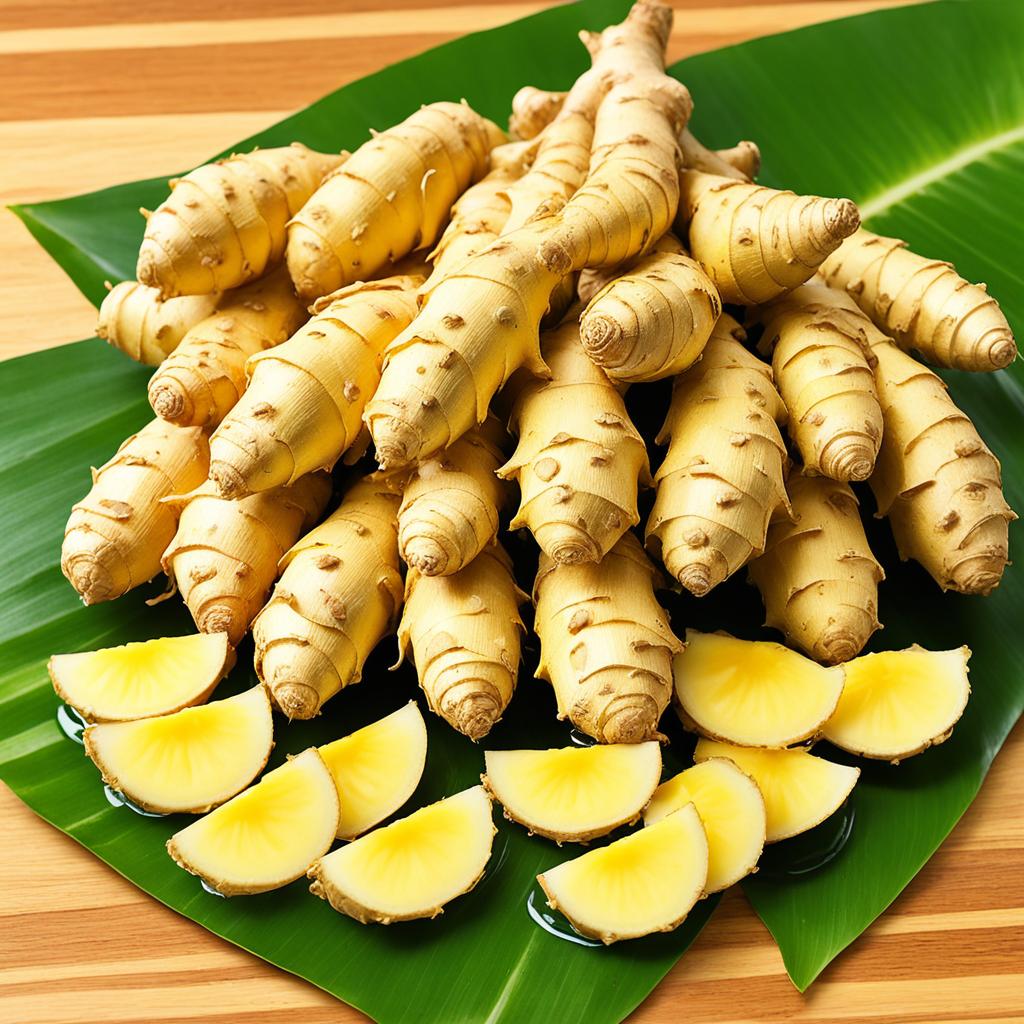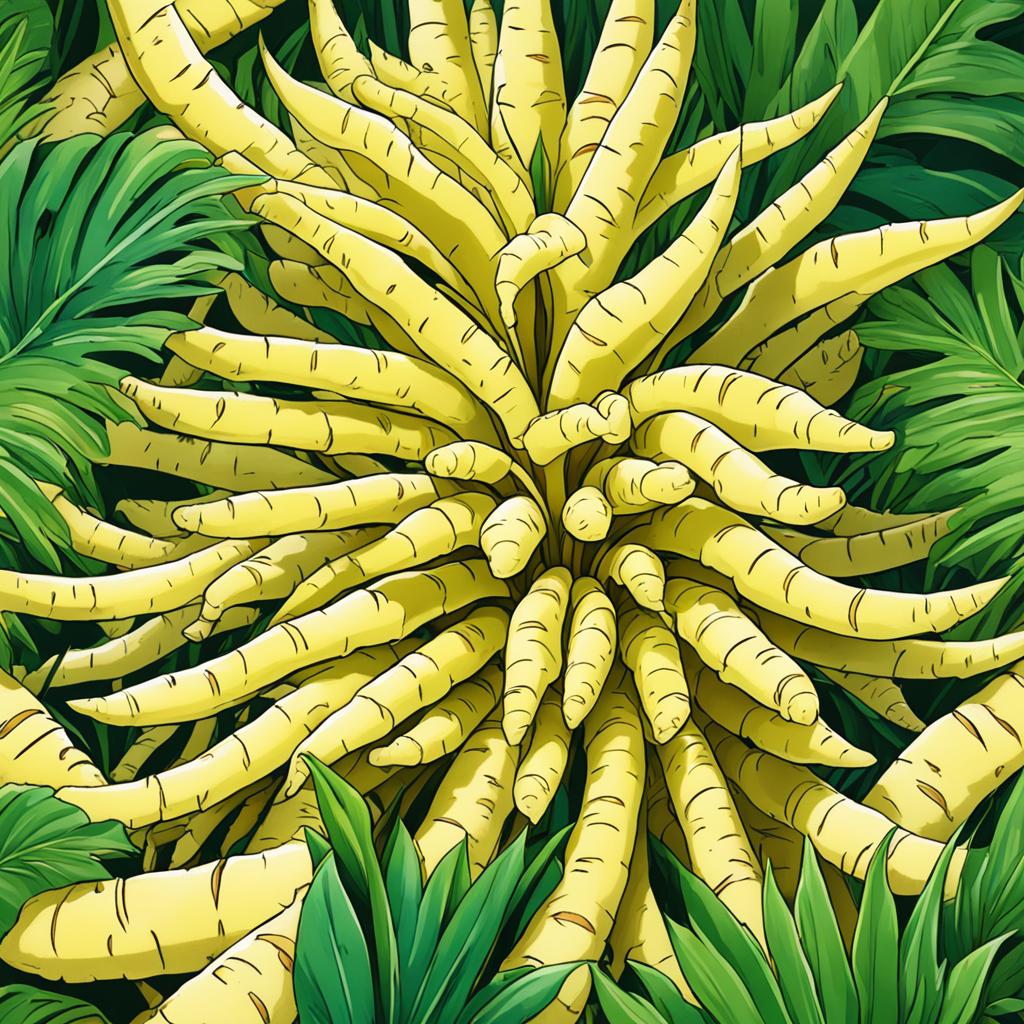Have you ever wondered if you can incorporate the unique flavors of Hawaiian ginger into your culinary creations? Hawaiian ginger is known for its aromatic properties and its use in prepared ethnic foods, but is it safe to eat? In this article, we dive deep to explore the edibility of Hawaiian ginger and unveil how it can add an exciting twist to your dishes.
From its origins in Hawaii to the different species of ginger plants found on the islands, you’ll discover the variety and beauty of these plants in Section 2. We’ll also explore the aromatic compounds present in ginger plants and the role they play in creating the distinctive fragrance and taste of ginger in Section 3.
Did you know that ginger has a rich history in traditional Hawaiian culture? In Section 4, we’ll take a journey through time and explore the traditional uses of ginger in medicinal practices, culinary traditions, and even beauty and skincare.
But what about the edibility of Hawaiian ginger? Are all ginger plants fit for consumption? In Section 5, we’ll unveil the truth about edible ginger varieties and help you differentiate between the ornamental and culinary ginger plants.
For those who are intrigued by the idea of growing their own ginger, Section 6 is a must-read! We’ll provide you with tips and insights on how to cultivate ginger in the tropical climate of Hawaii and add an exotic touch to your garden or yard.
So, get ready to embark on a journey of flavors, culture, and gardening as we unravel the mystery of Hawaiian ginger. Are you ready to explore the wonders of this edible delight? Let’s dive in!
The Different Species of Ginger Plants in Hawaii
When it comes to ginger plants, Hawaii is a treasure trove of diversity. With its favorable tropical climate, the islands are home to a variety of ginger species that belong to the Zingiberaceae Family. These plants not only add a touch of beauty with their vibrant colors and unique forms but also offer a range of uses, from ornamental to medicinal.
Here are some of the common ginger species found in Hawaii:
- Torch Ginger (Etlingera elatior): Known for its magnificent flower spikes, the Torch Ginger can reach heights of up to 20 feet. Its striking blooms come in vivid colors like pink, red, and white, making it a favorite plant for both garden enthusiasts and photographers. While it is mainly cultivated for ornamental purposes, some parts of the plant are used in traditional medicine.
- Crepe Ginger (Costus woodsonii): Featuring large, vibrantly colored flowers, the Crepe Ginger is an eye-catching addition to any garden. Its flowers resemble crepe paper, hence the name. Apart from its aesthetic appeal, the Crepe Ginger is known for its medicinal properties and is used in traditional Hawaiian herbal remedies.
- White Ginger (Hedychium coronarium): Also known as Butterfly Ginger, this species produces large, highly fragrant white flowers. With its elegant appearance and delightful scent, White Ginger is commonly grown for ornamental purposes and is often used in flower arrangements.
- Indonesian Wax Ginger (Zingiber macradenium): This ginger species is known for its waxy bracts that resemble the texture of candle wax. It produces showy, red and orange flowers that add a touch of tropical beauty to gardens. Indonesian Wax Ginger is often grown as a landscaping plant, but its rhizomes have also been used in traditional medicine.
- Scarlet Spiral Flag Ginger (Costus spicatus): With its unusual spiral pattern and vibrant scarlet flowers, this ginger species is a visual delight. The Scarlet Spiral Flag Ginger is primarily grown for its decorative appeal and is a popular choice for adding a pop of color to gardens and landscapes.
While each ginger species in Hawaii has its own unique characteristics, they all share a common trait: their affiliation with the Zingiberaceae Family. From their vibrant blooms to their potential medicinal benefits, these ginger plants contribute to the rich biodiversity of the Hawaiian islands.
By carefully selecting and cultivating different ginger species, enthusiasts and gardeners can create visually stunning landscapes that showcase the mesmerizing beauty of these plants. Whether used for their decorative purposes or their traditional healing properties, ginger plants in Hawaii continue to captivate both locals and visitors alike.
The Aromatic Compounds in Ginger Plants

Ginger plants are renowned for their aromatic properties, which are attributed to the presence of volatile oils in various parts of the plant, including the leaves, stems, flowers, and rhizomes. These volatile oils give ginger its distinctive fragrance and taste.
The aromatic properties of ginger are primarily due to three key compounds: zingerone, gingerols, and shogaols. These compounds not only impart a delightful aroma to ginger but also contribute to its flavor profile. They are responsible for the spicy, warm, and slightly sweet taste that ginger is known for.
It’s important to note that these aromatic compounds in ginger also possess medicinal properties. Studies have shown that gingerols and shogaols exhibit antibacterial effects, helping to combat harmful bacteria in the body. Furthermore, ginger is known for its analgesic properties, making it a popular natural remedy for soothing pain and discomfort. The fragrance of ginger also has a calming effect, providing relief from stress and anxiety.
The aromatic oils extracted from ginger plants are utilized not only in the culinary world but also in the perfume industry and traditional medicines. The distinct fragrance of ginger adds depth and complexity to a wide range of food flavorings, including sauces, marinades, and baked goods. Perfumers harness the captivating scent of ginger to create alluring fragrances and perfumes. Additionally, traditional medicine systems have long recognized the therapeutic benefits of ginger’s aroma and incorporate it into various herbal remedies and treatments.
Benefits of Aromatic Properties in Ginger:
- Enhances the flavor of culinary creations
- Provides natural antibacterial properties
- Offers analgesic effects for pain relief
- Promotes relaxation and reduces stress
- Used as a key ingredient in perfumes and fragrances
| Aromatic Compound | Source | Properties |
|---|---|---|
| Zingerone | Ginger rhizomes | Provides the warm, spicy fragrance of ginger; anti-inflammatory and antioxidant properties |
| Gingerols | Ginger rhizomes | Contribute to the pungent taste and aroma of ginger; exhibit antibacterial and analgesic effects |
| Shogaols | Ginger rhizomes | Result from the drying and dehydration of gingerols; possess more intense flavor and aroma than gingerols; known for their anti-inflammatory properties |
Ginger in Traditional Hawaiian Culture

Ginger has been a staple in traditional Hawaiian culture for centuries, valued for its versatile uses in medicinal practices, culinary traditions, and beauty rituals. The Hawaiian people have long recognized the benefits of this aromatic spice and incorporated it into various aspects of their daily lives.
Traditional Uses:
- Medicinal Purposes: The roots of ginger plants were sliced, dried, and pounded into a powder used in traditional Hawaiian medicine. Ginger was believed to have healing properties and was used to treat various ailments, including fevers, rashes, asthma, and intestinal worms.
- Culinary Traditions: Ginger was an essential ingredient in traditional Hawaiian cuisine. It added a unique flavor and aroma to dishes, enhancing the overall taste. Pork and fish were often wrapped in ginger leaves and stalks and cooked in an underground oven called ‘imu’, infusing them with the spicy and fragrant essence of ginger.
Beauty and Skincare:
In addition to its culinary and medicinal uses, ginger played a significant role in traditional Hawaiian beauty practices. It was used in soap-making, hair conditioning, and scenting tapa cloth, enhancing the sensory experience and promoting natural beauty.
Overall, ginger holds a special place in traditional Hawaiian culture, being valued for its multifaceted benefits. It continues to be celebrated and cherished for its role in medicinal remedies, culinary creations, and timeless beauty rituals, keeping the traditions and heritage of the Hawaiian people alive.
Is Hawaiian Ginger Edible?

Ginger plants in Hawaii offer a variety of rhizomes, some of which are edible and used in culinary creations. However, it’s important to distinguish between different ginger species to determine their suitability for cooking purposes.
The wild ginger species found in Hawaii, characterized by their feather-duster heads of fragrant blossoms growing along roadsides, are not typically used in cooking. These varieties have tough and pungent rhizomes that are more suitable for ornamental purposes.
On the other hand, there are edible varieties of ginger, such as Thai or Chinese ginger, which are readily available in supermarkets and commonly used in cooking. These ginger types have rhizomes that are tender and impart a delightful flavor to dishes.
When incorporating ginger into your culinary masterpieces, be sure to select the appropriate ginger species based on their edibility. The table below highlights the key differences between edible ginger and wild ginger:
| Characteristics | Edible Ginger | Wild Ginger |
|---|---|---|
| Flavor | Spicy, aromatic | Tough, pungent |
| Culinary Uses | Common ingredient in various cuisines, used in savory and sweet dishes | Primarily ornamental, not used in cooking |
| Availability | Readily available in supermarkets | Found growing wild along roadsides |
By choosing the right ginger variety, you can enhance the flavor of your dishes and add a touch of exoticism to your culinary creations.
- Ginger Stir-Fry: Sauté your favorite vegetables with thinly sliced ginger for a delicious and fragrant stir-fry.
- Ginger Tea: Brew sliced ginger in hot water with a squeeze of lemon and honey for a soothing and invigorating beverage.
- Gingerbread Cookies: Add ground ginger to your cookie dough for a warm and spiced treat.
- Coconut-Ginger Rice: Cook rice with coconut milk and grated ginger for a tropical twist on a classic side dish.
- Ginger Soy Sauce: Combine grated ginger, soy sauce, and a touch of sesame oil for a flavorful dipping sauce or marinade.
Growing Ginger in Hawaii
If you’re a gardening enthusiast in Hawaii, adding ginger plants to your garden or yard can introduce an exotic touch to your landscape. Fortunately, growing ginger in Hawaii is a rewarding and relatively easy process. Here are some cultivation tips to help you get started.
Ginger plants prefer a semi-shady spot with moist, well-aerated soil. Ensure that the location you choose offers protection from direct sunlight, as excessive heat can harm the plants. To propagate ginger, you can simply use fresh, organic rhizomes sourced from your local supermarket or health food store.
For optimal growth and health, ginger plants benefit from regular applications of compost and mulching. Compost supplies essential nutrients to the soil, while mulching with rotted leaves helps retain moisture and aids in weed suppression. Additionally, providing ginger plants with ample space to expand is crucial. Their shallow-rooted rhizomes tend to spread horizontally, creating dense stands over time.
With its ability to thrive in Hawaii’s tropical climate, ginger is an ideal addition to your garden or yard. Follow these cultivation tips, and soon you’ll be enjoying fresh ginger harvested from your very own backyard.
FAQ
Q: Is Hawaiian ginger edible?
A: Yes, there are edible varieties of ginger that are commonly found in supermarkets and used in cooking.
Q: What are the different species of ginger plants in Hawaii?
A: Some of the common ginger species found in Hawaii include Torch Ginger, Crepe Ginger, White Ginger, Indonesian Wax Ginger, and Scarlet Spiral Flag Ginger.
Q: What are the aromatic compounds in ginger plants?
A: Ginger plants contain volatile oils, such as zingerone, gingerols, and shogaols, which are responsible for the distinctive fragrance and taste of ginger.
Q: How was ginger used in traditional Hawaiian culture?
A: In traditional Hawaiian culture, ginger was used for medicinal purposes, food flavoring, and various beauty and skincare practices.
Q: Can I eat all types of ginger plants in Hawaii?
A: Not all ginger plants in Hawaii are suitable for culinary purposes. Wild ginger species, such as those with feather-duster heads of fragrant blossoms growing along roadsides, are typically not used in cooking due to their tough and pungent nature. However, there are edible varieties of ginger, such as Thai or Chinese ginger, that are commonly used in cooking.
Q: How can I grow ginger in Hawaii?
A: Ginger can be grown in Hawaii in gardens and yards. It prefers a semi-shady spot with moist, well-aerated soil. Propagation can be done using fresh, organic rhizomes from the supermarket or health food store. With proper care, ginger can thrive in Hawaii’s tropical climate and add an exotic touch to your garden or yard.
